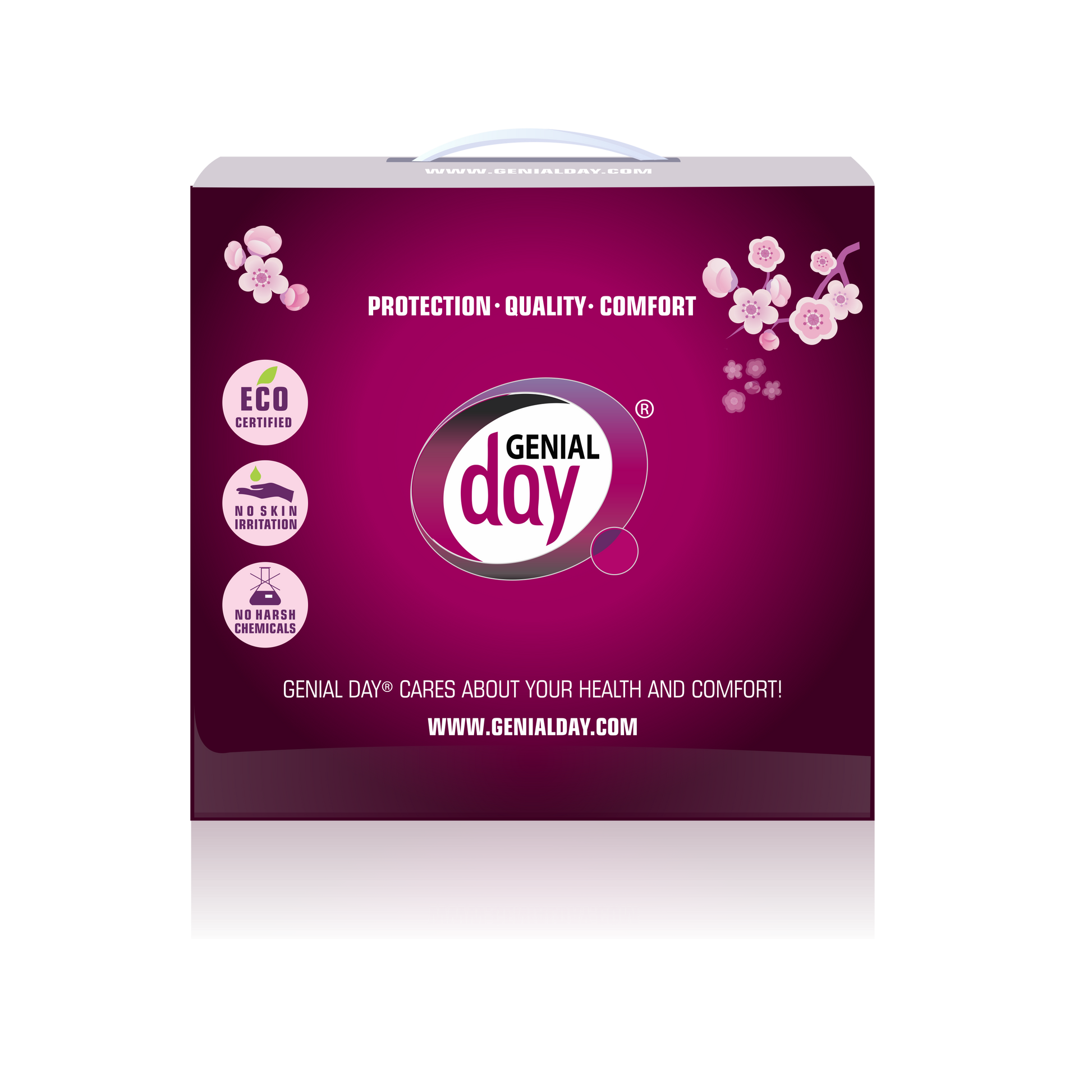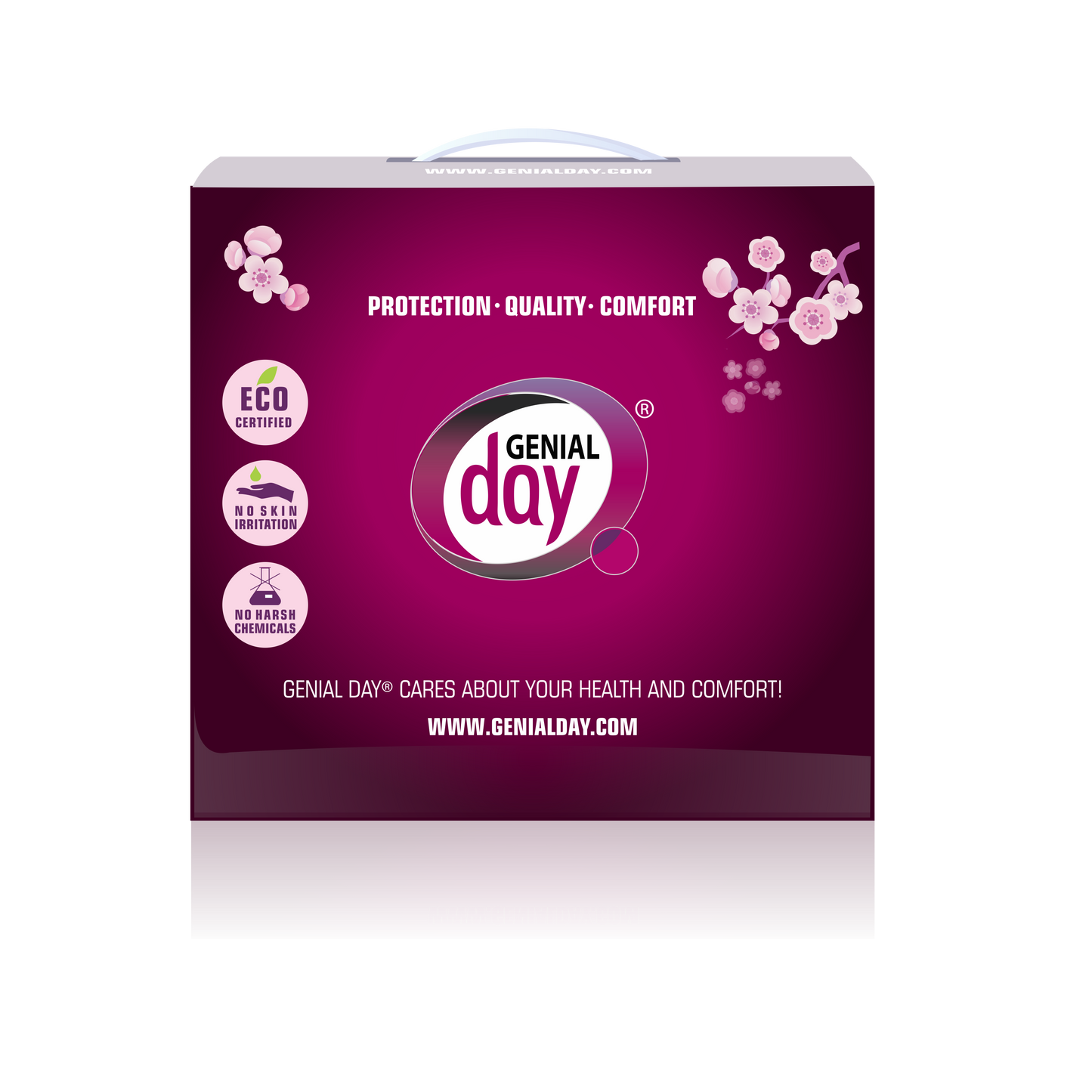The recent study on metals found in tampons, which appeared at the beginning of July, has caused a lot of buzz, especially in the US. The loud and frightening headlines caused a lot of panic among menstruators, especially those who use tampons regularly. In the US, the number of such people is very high—ranging from 52% to 86%. Tampon use is also high in Spain, France, and Germany.
Summary of the new study "Tampons as a source of exposure to metal(loid)s"
A study from the University of California, Berkeley, published in Environmental International, looked at popular organic and non-organic tampons purchased in physical stores in the US (New York), the EU (Athens, Greece), and the UK (London, England), as well as in two large retail e-stores. The study found measurable concentrations of all 16 assessed metals, including metals with higher toxicity such as lead, arsenic, and cadmium. The highest concentration was found of lead. The brands and manufacturers were not disclosed, causing confusion among consumers.
Key points:
- The scope of study: The study tested 30 tampon samples from 14 popular brands:
- 12 brands form US and 3 brands from UK/EU (one same brand in US and UK/EU). Tampons were purchased between September 2022 and March 2023.
- 5 brands of tampons were labeled "organic," and only one of them was from the UK/EU. There is no legal definition of 'organic' for tampons, and it is unclear which organic certificates the tested tampons labeled 'organic' had.
Overall Conclusions:
- The study indicates the presence of various metals in all tested tampons, with significant variability between different brands, manufacturers, and geographical regions.
- Organic tampons showed both higher and lower concentrations of specific metals compared to non-organic tampons, suggesting that organic status alone does not guarantee lower metal content.
- The high concentrations of Zinc (Zn) and Calcium (Ca) might be due to their intentional addition for antimicrobial properties, odor control, and lubrication.
- The study's findings emphasize the need for further research to understand the sources and health implications of metal contamination in tampons.
Sources of metal contamination in tampons
The researchers suggest that metals can be introduced to tampons through several routes:
- Raw material contamination: Cotton, rayon, or viscose can be contaminated during production (e.g., atmospheric deposition, wastewater). Tampons in the study were made in various countries, predominantly in the US, but often the source of raw ingredients was not disclosed.
- Water contamination: Metals can contaminate tampons via water used during manufacturing, as water in the EU and US sometimes contains metals like lead.
- Intentional additives: Metals such as Ca, Co, Cr, Cu, Ni, and Zn may be added as antimicrobial agents, odor control, or lubricants. The study found high concentrations of Ca and Zn, likely used for these purposes.
- Pigments: Metals are used as pigments to color applicators or parts of the tampon. No significant difference in metal concentrations was found between tampons with plastic, cardboard, or no applicators.
Should menstruators who use tampons be concerned?
Given the recent study on metals found in tampons, it's natural for people to feel concerned. Here are the key points to consider:
- Study size and scope: The study was relatively small, testing only 30 tampon samples from 14 brands. While it identified metals in all tampons tested, the limited sample size means the findings are preliminary and need further validation.
- Metal concentrations: The detected metals were found in varying concentrations, with some metals present in very low amounts. This could be due to extremely low detection limits in the study or environmental contamination of the raw materials.
- Potential sources of contamination:
- Raw Materials: Contamination can occur during the production of cotton, rayon, or viscose, possibly from atmospheric deposition or wastewater.
- Manufacturing Process: Water used in manufacturing can introduce metals, especially if it's contaminated.
- Intentional Additives: Metals may be added for antimicrobial properties, odor control, or lubrication. The study found higher levels of certain metals like calcium and zinc, which are used for these purposes.
- Regulatory standards: While there are no strict regulations requiring tampons to be tested for all potential chemicals, products like GENTLE DAY tampons (our brand tampons sold only in Europe) are certified by the Global Organic Textile Standard (GOTS), ensuring they meet high safety and quality standards.
- Health risks: The study's authors call for more research to determine whether metals in tampons pose significant health risks. Current evidence does not conclusively show that these metals are absorbed by the body at harmful levels.
Reassurance and Recommendations
- Certified products: Choose tampons that are certified organic and meet rigorous safety standards. The strictest organic cotton certification is by GOTS. Look for GOTS label on the tampon box.
- Awareness: Stay informed about the ingredients and certifications of the menstrual products you use. Always look for the ingredients list on the package, and read the ingredients on the websites you are purchasing the products. The best choice is the tampons with only one ingredient - organic cotton.
- Ongoing research: Understand that research is ongoing, and new findings will continue to inform safer product choices.
In conclusion, while the study highlights potential areas of concern, the findings are not definitive. Certified products like GENTLE DAY (our EU brand tampons) offer a safer alternative, and ongoing research will provide clearer guidance in the future.
Our Company's Position on Tampon Requirements
We have always been advocates of all period products being certified either eco or organically, depending on materials used, and having clear regulatory standards, as these products come into very close contact with our vulva and vagina. It is very easy for both good and bad substances to pass through the vaginal mucosa, especially with tampons, because they are inserted into the vagina.
Unfortunately, there are no strict requirements for these products, except that they meet hygiene requirements, are free from contamination, and pass microbiological tests. They are not tested for any other chemicals. It depends entirely on the choice of the brand or manufacturer.
In our opinion, the risks in tampons are much higher when fibers or materials are specially treated with certain chemicals to make products easier to insert, absorb, and control odor, or bacteria, rather than when heavy metals are present at very low levels. The reality is that heavy metals are now everywhere—in drinking water, air, soil, and food. It is probably impossible to avoid them completely.
Tampons with Plastic Applicators
In addition, we believe that tampons with plastic applicators should be banned completely, just as single-use plastic utensils, straws, and tools have been banned in the EU recently since the plastic applicator is the shortest-used plastic on the planet. Choose carton applicators, or non-applicator tampons instead.
Why do we advocate choosing the tampons certified GOTS?
GOTS Certification:
- Comprehensive Certification: GOTS is the most comprehensive certification for textile products - especially cotton. Its specifications cover environmental, chemical, and social aspects as well as quality requirements.
- Chain Coverage: GOTS certification covers the entire chain, from the cultivation of raw materials to the labeling of the final product. All stages are subject to audits and inspections by independent third parties.
- Strict Rules on Chemicals: GOTS has strict rules on chemicals that could pose a potential health and safety risk, including limit values for harmful chemicals and heavy metals.
- Third-Party Verification: Reliable third-party verification to test raw cotton fiber for heavy metals.
Stay Informed
We will continue to gather new information on tampon safety and will be sure to share any news we receive. In the meantime, we urge everyone to calm down and pay attention to the composition of the tampons and the certificates on the packaging. Don’t just rely on the words "ORGANIC cotton" on tampon packaging. Choose tampons made from GOTS-certified organic cotton.
You can read about all our product certifications here.
Take care of yourself and stay healthy!



